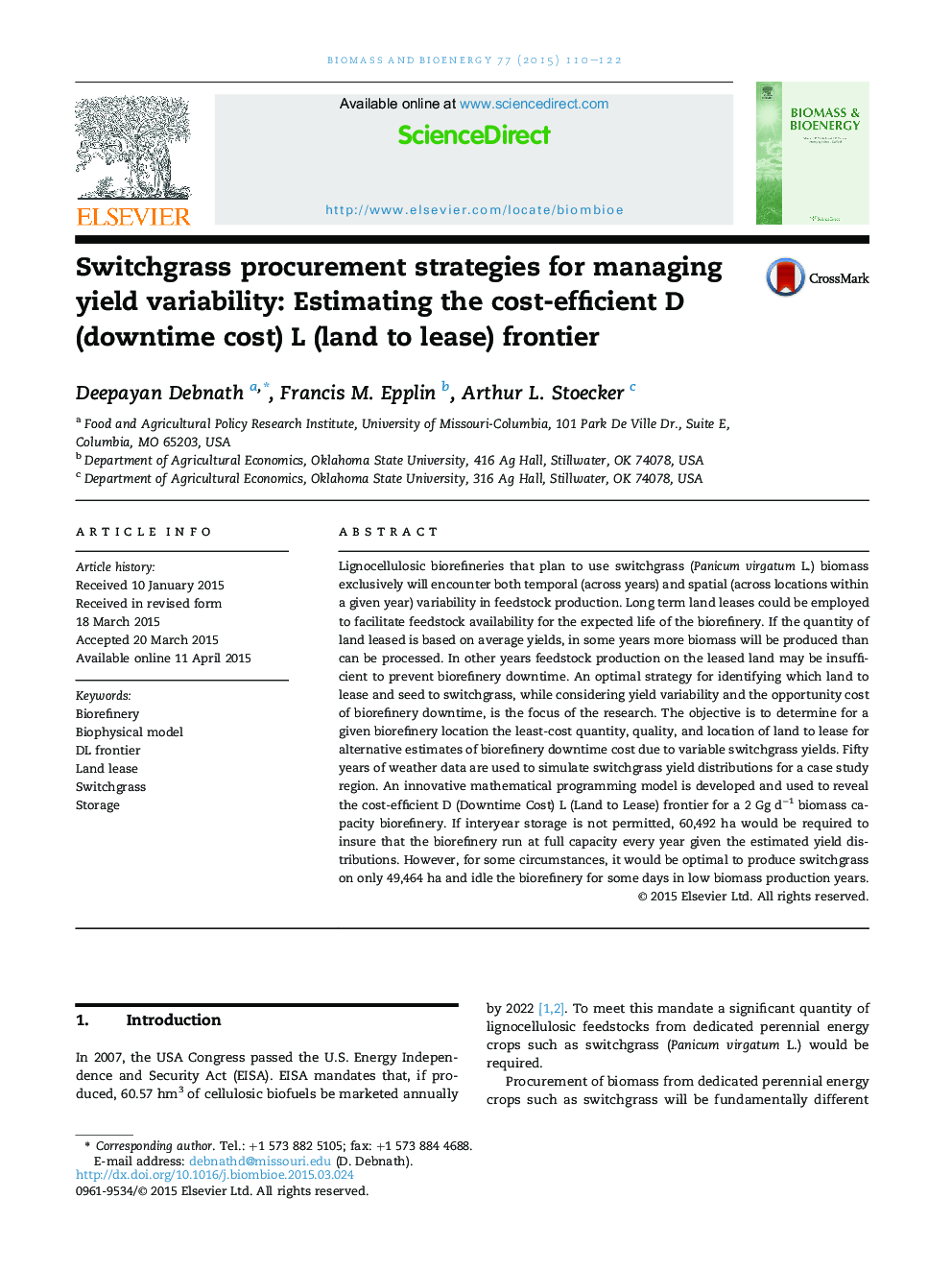| Article ID | Journal | Published Year | Pages | File Type |
|---|---|---|---|---|
| 676772 | Biomass and Bioenergy | 2015 | 13 Pages |
•We model switchgrass yield variability across time and space.•An innovative mathematical programming model is developed.•The model considers biorefinery downtime cost and switchgrass yield variability.•The model determines quantity, quality, and location of land for switchgrass.•Optimal quantity of land leased depends on the opportunity cost of idling the biorefinery.
Lignocellulosic biorefineries that plan to use switchgrass (Panicum virgatum L.) biomass exclusively will encounter both temporal (across years) and spatial (across locations within a given year) variability in feedstock production. Long term land leases could be employed to facilitate feedstock availability for the expected life of the biorefinery. If the quantity of land leased is based on average yields, in some years more biomass will be produced than can be processed. In other years feedstock production on the leased land may be insufficient to prevent biorefinery downtime. An optimal strategy for identifying which land to lease and seed to switchgrass, while considering yield variability and the opportunity cost of biorefinery downtime, is the focus of the research. The objective is to determine for a given biorefinery location the least-cost quantity, quality, and location of land to lease for alternative estimates of biorefinery downtime cost due to variable switchgrass yields. Fifty years of weather data are used to simulate switchgrass yield distributions for a case study region. An innovative mathematical programming model is developed and used to reveal the cost-efficient D (Downtime Cost) L (Land to Lease) frontier for a 2 Gg d−1 biomass capacity biorefinery. If interyear storage is not permitted, 60,492 ha would be required to insure that the biorefinery run at full capacity every year given the estimated yield distributions. However, for some circumstances, it would be optimal to produce switchgrass on only 49,464 ha and idle the biorefinery for some days in low biomass production years.
